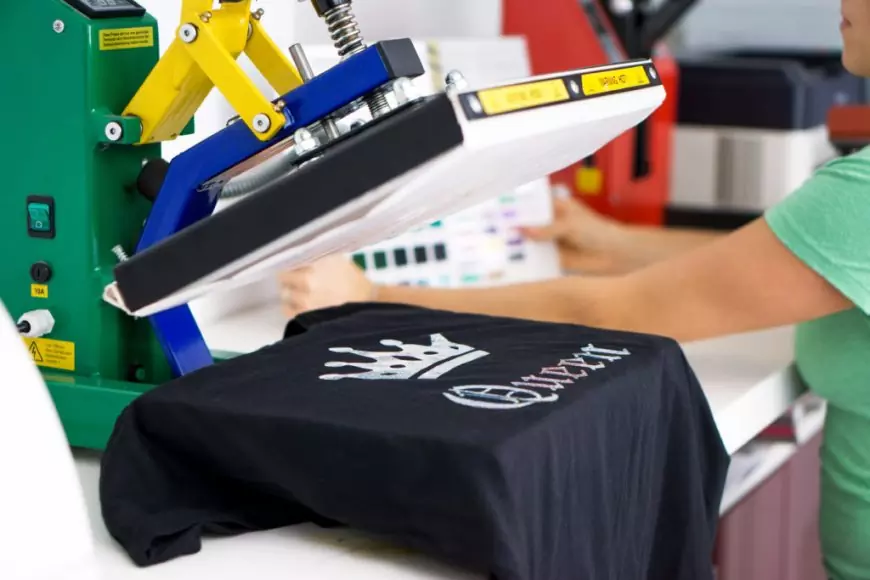How is the process of printing graphics on clothing?
Do you want to know how the process of printing graphics on clothes is performed then you are at the right place.

Process of printing graphics on clothing
There is a small group of people who can name several ways to print on a T-shirt. Even fewer people can explain why such a division was created at all, but fortunately, today we want to give you a sneak peek and explain how the process of performing this activity works, broken down into different techniques as we are using these techniques for Dallas t shirt printing.
Having printed T-shirts is nothing surprising and each of us probably has a few (if not a dozen) of them in our wardrobe. We go to the store and buy the finished product, because we just like it, and there are not many questions related to it in our minds. Probably, if you needed to commission more T-shirts to be printed, you would convey the vision of the project and hand over its implementation to the company, trusting that it will do it right - after all, it knows the subject. Of course, it is, but it is worth making the client aware of why specific decisions regarding the choice of technique were made and how the implementation process went.
Let's start with the fact that we have different types of clothing marking, respectively: sublimation printing, thermal transfer, digital printing, and screen printing. If these names are unfamiliar to you, I refer you to our offer, where you will find the answer, to what characterizes each of these techniques.
Sublimation print
The best choice is when the graphics are to be a photo and we want the most accurate representation. The only possible material for this technique is light-colored polyester.
Steps:
- Preparation of the project in high-quality CMYK colors - at least 300 dpi at 1:1 size (does not contain white - it cannot be printed)
- Printing the project on sublimation paper using special inks (binding only to polyester fiber)
- Heating the dye into the material using a press
The dye combines with the material by changing its state to gas first, and then penetrates the open fibers of the fabric and permanently settles inside them.
silkscreen
It gives a lot of room for maneuvering when creating graphics and is not afraid of the type of material and its color. The costs are calculated based on the number of colors used for the project (the more the more expensive).
Steps:
- Preparation of the project in PANTONE colors, in a vector file, or as a bitmap
- Calling up the project on the film
- Preparation of a screen printing mesh, i.e. a rectangular frame on which nylon, polyester, or metal fibers are stretched
- Preparation of the template - covering the mesh with a special emulsion, and then irradiating it with UV light through a film with the developed image
- Wash off the unpaved areas of the stencil with water
- Preparation of separate templates for each of the colors on the project
- Placing the templates in the machine
- Pouring and spreading the paint over the entire surface of the mesh
- Squeezing the paint with a squeegee through the water holes directly onto the material
- Drying the print in a special oven.
Thermal transfer
A good method for large orders and product variety. It is not suitable for marking fleece but can be used in hard-to-reach places. This is an indirect method of screen printing.
Steps:
- Work on the project using the PANTONE Solid Coated color scheme
- Preparation of the template as in the case of the screen printing method
- Application of liquid or powder glue after applying colors to the stencil
- Welding the whole in a heating tunnel
- Transfer of graphics to clothing using a thermal transfer press at the right pressure and temperature
Digital Print
A method of direct printing performed using a printing machine that creates an image directly from a design sent from a computer. Thanks to this, it allows you to personalize a single implementation. It does not create color barriers.
Steps:
- Preparation of graphics in any graphic file (maintaining quality)
- Heating clothes to evaporate moisture
- Applying a primer (fixer) to clothing that allows the paint to be applied
- Reheating clothes
- Placing clothes on a special pad
- Direct application via printer heads
- Welding the resulting image into the fabric using a press
As you can see, the methods differ and each is used in a different situation, so it is worth getting acquainted with the production process to know what actions are responsible for quality. After all, we want to invest in what is sustainable and profitable, and we put these features on a pedestal.
What's Your Reaction?

























































































